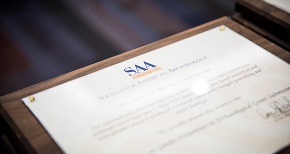Elemental Analysis with LA-ICP-MS for Archaeology
Laser ablation-inductively coupled plasma-mass spectrometry (LA-ICP-MS) has been used in the field of archaeology for close to three decades to measure the composition of ancient objects. It combines an analytical technique able to determine a wide range of elements with concentrations in the range of the ppm (parts-per-million) or lower with a quasi-nondestructive sampling approach. Indeed, one of the more interesting features of LA-ICP-MS is the use of laser ablation as a sample tool that leaves traces on the object that are invisible to the naked-eye. It is used for inorganic materials such as obsidian, synthetic glass, ceramic and metals. This analytical technique is used to understand ancient technology and determine the provenance of raw materials and the circulation of finished goods. After a description of the instrumentation and of the experimental conditions that are used, we will compare this technique with other well-established techniques such instrumental neutron activation analysis and x-ray fluorescence. We will discuss different case studies involving ancient glass, ceramic and metals to show how LA-ICP-MS can advance archaeological research.


